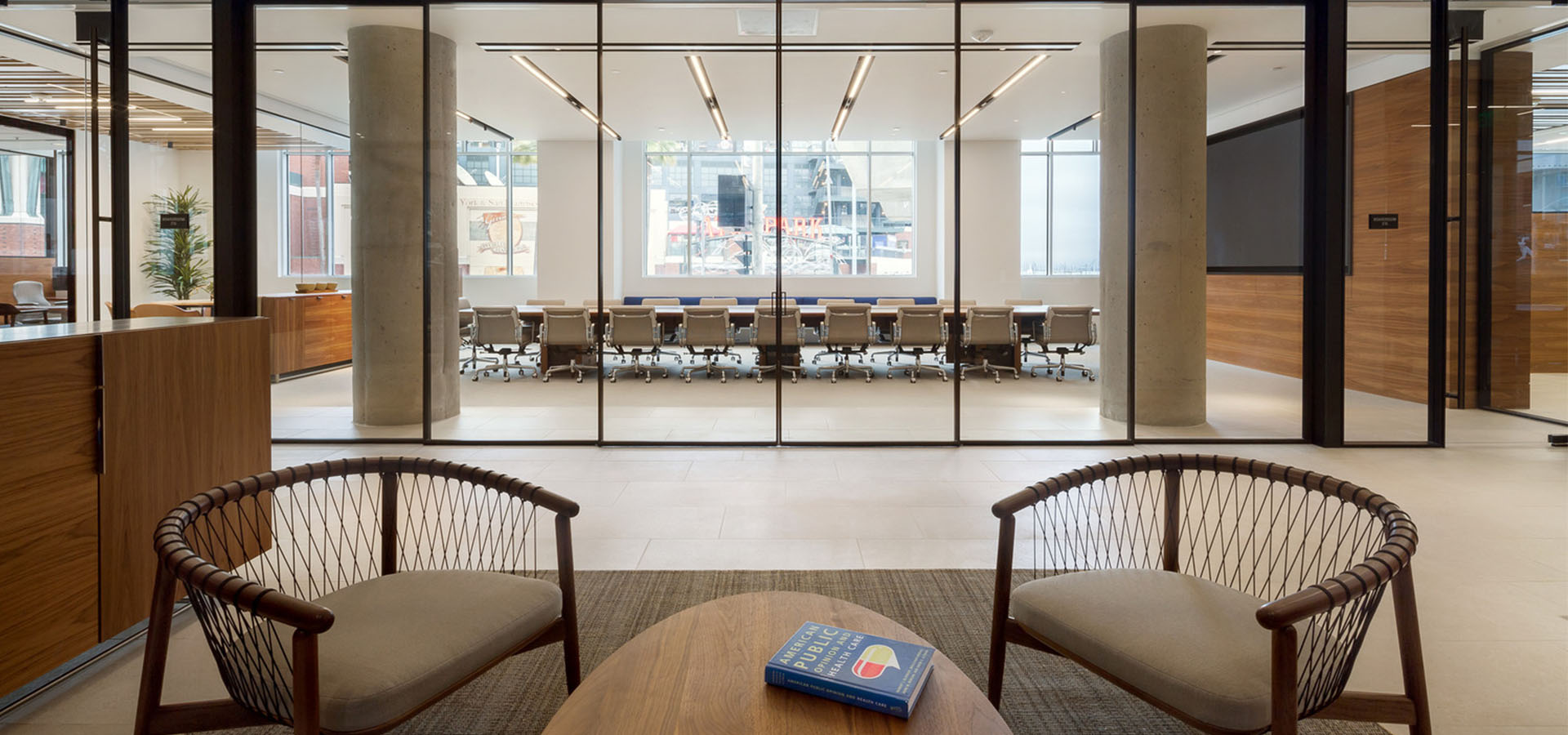
Stay-At-Home with Bohlin Cywinski Jackson
Eight weeks ago we temporarily closed our offices in line with local shelter-in-place and stay-home orders. Because our firm has six collaborative offices across the country, we’ve been leveraging remote work technologies, but adopting a fully dispersed workforce in a time of crisis is an entirely new challenge. While we adapted quickly, what we’re experiencing now is not a typical work from home situation. Finding new ways to support each other and our clients while collaborating virtually is essential to our work. We’re exploring the short- and long-term implications of the COVID-19 pandemic on architecture and the built environment and we’re learning a lot about how we practice and how we may practice in the future. We shared some of our early observations with BUILD and Dezeen.
In BUILD’s recent post, “Two Critical Questions for Important People,” Principal Ray Calabro speaks to the firm’s ability to adapt to digital connection and collaboration. “Working remotely has pushed us to be more proactive about connecting with each other, and to be more creative in the ways we connect. I’ve been inspired by our firm’s enthusiasm for digital collaboration, and for their ability to solve issues of productivity, work-life balance, and technical challenges.”
Dezeen’s article, “Working from home “the new normal” for architects and designers,” Communications Director Karen Robichaud notes that we’re finding more camaraderie amoung our colleagues, “in some ways we’re seeing more conscious socialization because we can’t rely on serendipitous connections in the same way right now.”
The workplace is going to change once shelter-in-place and stay-home orders lift. In a Business Insider article, “Experts say the office as we knew it is gone, and companies will need one-way hallways, sneeze guards, and other safety measures to let employees return. Here’s what it could look like,” industry professionals dive into what they see for the future of workplace design. Greg Mottola, Principal, thinks tech workplaces will stay closed for many months. Our “tech clients aren’t exactly jumping at the opportunity to reopen just yet. Remote work was already deeply ingrained in the tech industry, where productivity has long been valued over simple office attendance,” Mottola says.
We also spoke with Architectural Record about how our clients are approaching plans to re-open offices, “Architects Advise Clients on Safely Reopening Offices.” What we’re finding is that our clients have their finger on the pulse of their local orders and how those are changing, but proceeding with caution. Greg Mottola told Record, “There is lots of momentum, but lots of caution.” With such a fluid situation, particularly in the near-term, we’re helping our clients navigate the current crisis and explore a continuum of solutions.
Mottola also spoke with Business Insider about requests we’re exploring with our residential clients. Part of our portfolio has always included residential projects and now we’re all thinking and re-thinking our home environment with fresh perspective. “Silicon Valley execs are requesting revamped home offices with generators and ergonomic chairs as more companies adopt work-from-home policies.”
The home is no longer just a place of leisure, it is your office, your lunch table, and your conference room. The asks have not been extravagant, but important and intentional. “You’re really thinking about it as a work chair — the ergonomic chair — because we might be spending days, weeks, months, needing to work from there,” said Mottola. Choices that may have been fueled by design are now being chosen for function.